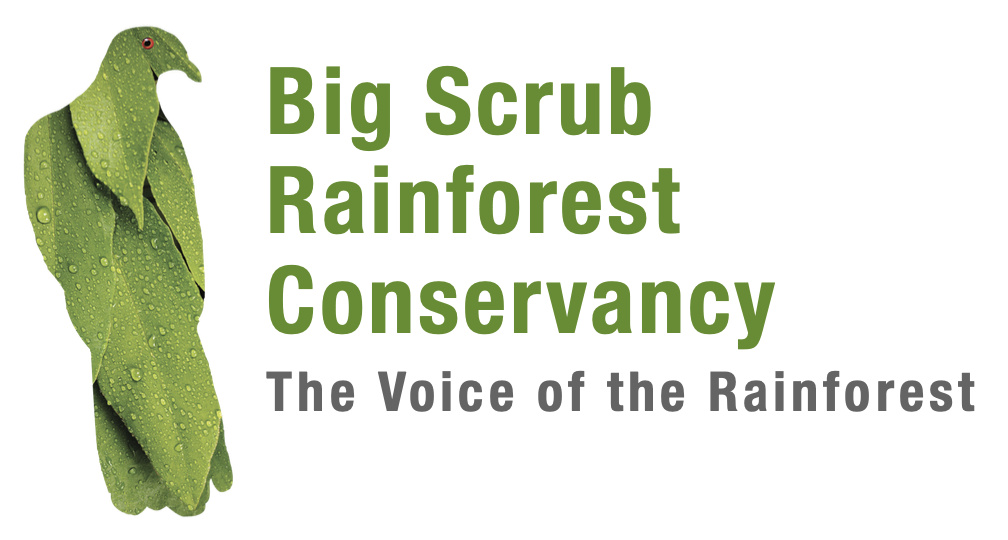Contributed by Joy Window, Member, Big Scrub Landcare
When you’re out in the Big Scrub rainforest and want to rest against a tree, don’t lean against this curtain of silk. Underneath it may be the highly venomous northern tree funnelweb (Hadronyche formidabilis). You can see the silk trip-lines that alert the spider to things crawling over the surface – then it will leap out and grab its meal, retreating under the web in a split second. Behind the curtain is a long, silk-lined funnel in which the spider rests.
Funnels have been found up to 30 m above ground, and also in fallen, rotting logs above ground level.
The meal may be a beetle, millipede, small skink – even a tree frog. The spider crushes the prey with its large fangs, injecting poison at the same time. It cannot eat solid food, so it squeezes out the liquid insides of its prey and syphons them into its mouth using its powerful sucking stomach muscles.
Northern tree funnelweb spiders are generally larger than even Sydney funnelwebs – females, the larger of the sexes, can be 5 cm in body length.
You might also notice neat, silk-lined holes in the ground, maybe the size of a 10c piece. These will be the homes of trapdoor spiders. Not all trapdoor tunnels have doors, but when they do they are very well camouflaged. Burrows have been reported as 30–40 cm deep, and provide moisture and protection from heat and predators.
Trapdoors and funnelwebs both hunt at night either in or very near their burrows. Despite having eight eyes, they have very poor eyesight, sensing by vibrations. They have four book-lungs on the under-surface of the abdomen; these supply oxygen to the spiders.
Female trapdoors and funnelwebs lay their eggs in their retreat several months after mating, and the hatchlings may remain in the burrow for several months before dispersing.
Males die soon after mating, while the females continue moulting and growing and can be long-lived (trapdoors 5 to 20 years). As trapdoor spiders grow, they enlarge their burrows, and ‘annual rings’ of silk can be seen at the lips of some trapdoor burrows.
Birds, centipedes, scorpions, parasitic wasps and flies make short work of these spiders.
Huntsman, jumping and wolf spiders also occur in Big Scrub rainforest, as there is lots of insect life scuttling around on the ground for them to prey on. There are few large web-weavers, though, because there are few flying insects there, but tiny web-weaving spiders thrive within the leaf litter. Snare-building spiders find food among the fallen branches, tree stumps and rock ledges.
So next time you are walking in the rainforest, spare a thought for the dramas in the thousands of little lives going on all around you.


